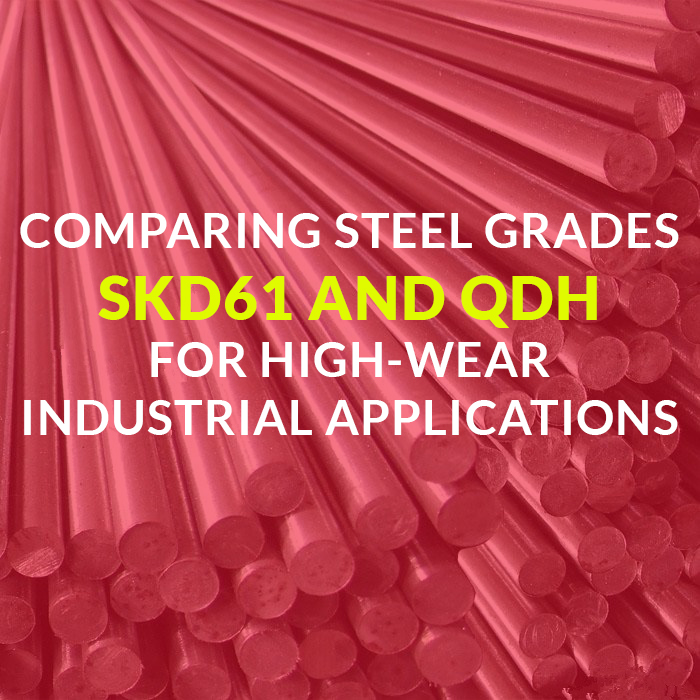GLOBAL STEEL COMPANY | 24/7 AFTER SALES SUPPORT
Case studiesCase studies

Comparing Steel Grades SKD61 and QDH for High-Wear Industrial ApplicationsClient: Automotive Parts ManufacturerIndustry: Automotive and Heavy Machinery ManufacturingSteel Grades Used: SKD61 and QDH
BackgroundAn automotive parts manufacturer faced challenges with tool durability and wear resistance in their die-casting and heavy machining applications. The client initially used SKD61 steel but was exploring options to extend the lifespan of tools and equipment. After an evaluation, QDH steel was considered as an alternative to improve performance and reduce downtime associated with tool replacements.
ChallengeThe client needed a steel solution with:
Exceptional heat resistance (for die-casting tools).
Enhanced wear resistance (to reduce tool wear in heavy machining).
A higher life ratio to extend operational time between replacements.
Improved performance under high-stress and high-temperature conditions.
Solution 1: SKD61 Steel in Die-Casting Tools
Steel Grade: SKD61Application: Die-casting molds for automotive components
Implementation and Results:
Heat Resistance: SKD61s heat resistance was a significant advantage, performing well in high-temperature die-casting applications.
Moderate Wear Resistance: While SKD61 offered decent wear resistance, it required frequent maintenance and replacement due to the abrasive nature of the manufacturing process.
Life Ratio: The life ratio of SKD61 in this application was 1.0 compared to other conventional steels.
Operational Impact: SKD61 met initial requirements, though maintenance frequency limited production efficiency.
Solution 2: QDH Steel in Heavy Machining Tools
Steel Grade: QDHApplication: Machining tools for automotive structural components
Implementation and Results:
Wear Resistance: QDH steel showed outstanding wear resistance in high-stress, abrasive machining applications, significantly outperforming SKD61 in heavy-duty environments.
Extended Tool Lifespan: Due to QDHs durability, tools lasted substantially longer, with a life ratio of 2.9 compared to traditional steels and approximately twice the lifespan of SKD61 in equivalent conditions.
Heat Tolerance: While QDHs heat resistance was slightly lower than SKD61, it was adequate for machining applications that did not require extreme heat handling.
Cost and Efficiency Benefits: The reduced maintenance and longer tool lifespan led to a 30% reduction in tool replacement costs and 45% decrease in downtime.
Grade
Hardness (HRC)
Die Life
Factor
Life Ratio
SKD61
49
1,700 pcs
Crack
1.0
QDH
52
5,000 pcs
Crack
2.9
ConclusionWhile SKD61 is suitable for applications requiring high heat resistance, QDH steel offers a higher life ratio and better wear resistance, making it ideal for machining and high-wear applications. By transitioning to QDH for specific tooling, the client achieved substantial cost savings and operational efficiency, showcasing QDHs superiority in applications where extended tool life and low maintenance are critical.
